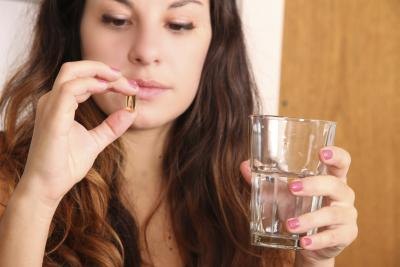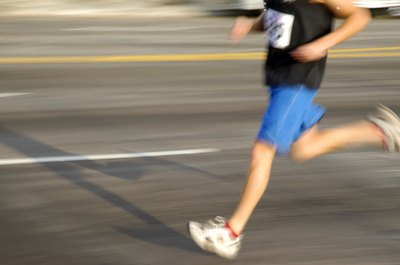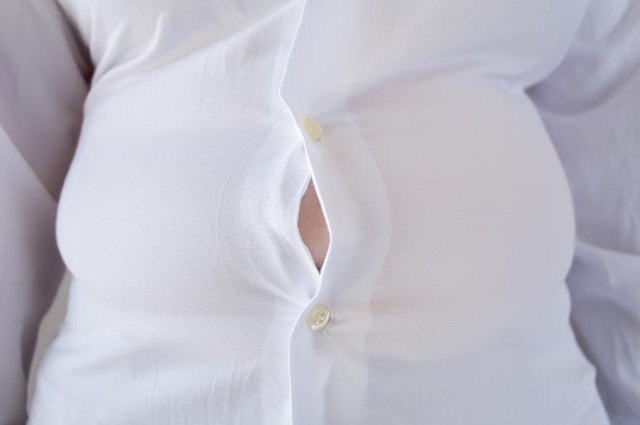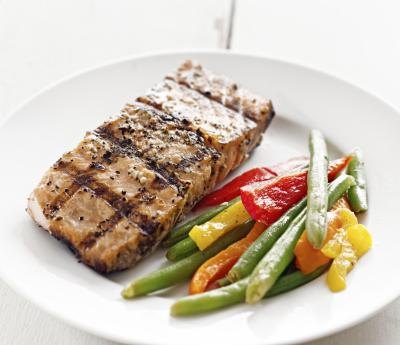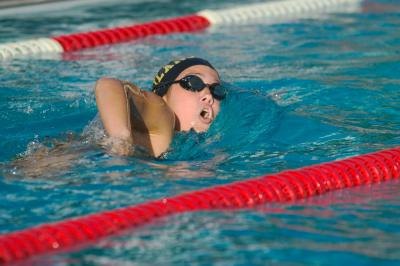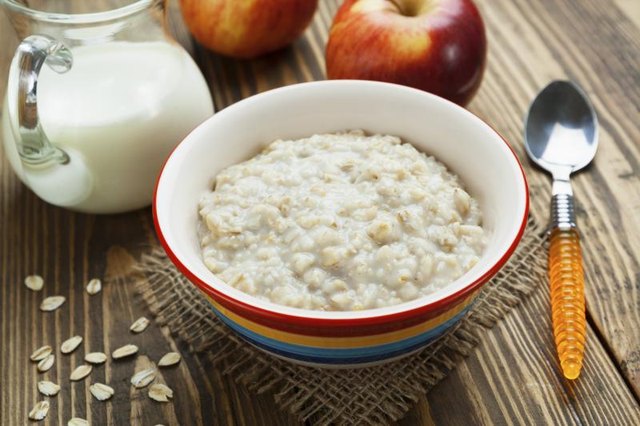Aldhous JR, Mason WL (1994) Forest nursery practice: Forestry Commission Bulletin 111. HMSO, London, p 268
Ammer C (2003) Growth and biomass partitioning of Fagus sylvatica L. and Quercus roburL. seedlings in response to shading and small changes in the R/FR-ratio of radiation. Ann For Sci 60:163–171CrossRef
Amoroso G, Frangi P, Piatti R, Ferrini F, Fimi A, Faoro M (2010) Effect of container design on plant growth and root deformation of Littleleaf Linden and Field Elm. HortScience 45:1824–1829
Aphalo P, Rikkala R (2003) Field performance of silver-birch planting-stock grown at different spacing and in containers of different volume. New For 25:93–108CrossRef
Armand G (1992) Techniques de plantation de feuillus précieux: caractéristiques de plants de merisier, de frêne, et érable sycomore. Revue Forestière Française. Numéro special:67–70
Balandier P, Dupraz C (1999) Growth of widely spaced trees. A case study from young agroforestry plantations in France. Agrofor Syst 43:151–167CrossRef
Barthélémy D, Caraglio Y (2007) Plant architecture: a dynamic, multilevel and comprehensive approach to plant form, structure and ontogeny. Ann Bot 99:375–407
Becquey J (1997) Les noyers à bois (Walnut for wood production). Institut pour le Développement Forestier (IDF), Paris (In French)
Bohanek JR, Groninger JW (2003) Impacts of intensive management on black walnut (Juglans nigra L.) growth and bole quality at mid-rotation. For Sci 49:522–529
Bolte A, Löf M (2010) Root spatial distribution and biomass partitioning in Quercus robur L. seedlings: the effects of mounding site preparation in oak plantations. Eur J For Res 129:603–612CrossRef
Borcher R (1975) Endogenous shoot growth rhythms and indeterminate shoot growth in oak. Physiol Plant 35:152–157CrossRef
Brønnum P (2004) Does autumn climate affect the applicability of shoot frost hardiness as an operational test parameter for storability of Pedunculate oak (Quercus robur L.) seedlings. In: Ciccarese L, Lucci S, Mattsson A (eds) Nursery production and stand establishment of broad-leaves to promote sustainable forest management, APAT Atti 5/2003, Rome, pp 25–31
Buck-Sorling GH, Bell AD (2000) Crown architecture in Quercus petraea and Q. robur: the fate of buds and shoots in relation to age, position and environmental perturbation. Forestry 73:331–349CrossRef
Burdett AN (1990) Physiological process in plantation establishment and the development of specifications for planting stock. Can J For Res 20:415–427CrossRef
Buresti Lattes E, Mori P, Ravagni S (2014) The permanent polycyclic plantations: narrowing the gap between tree farming and forest. In: Bozzano M, Jalonen R, Thomas E, Boshier D, Gallo L, Cavers S, Bordács S, Smith P, Loo J (eds) Genetic considerations in ecosystem restoration using native tree species. State of the World’s Forest Genetic Resources—Thematic Study. FAO and Bioversity International, Rome, pp 188–194
Calvo E, D’Ambrosi E (1995) Proposte di standard di idoneità colturale per il postime vivaistico di alcune latifoglie nobili. Monti e Boschi 4:22–24
Cappelli V, Maltoni A, Mariotti B, Montaghi A, Nocentini, S, Tani A, Travaglini D (2009) Individuazione delle aree vocate all’arboricoltura con specie a legname pregiato in provincia di Firenze. In Ciancio O (ed) Proceedings of the 3rd National Silviculture Congress, Taormina (ME), Italy, October 16–19, 2008, vol 2. pp 796–803
Chirino E,Vilagrosa A, Fernández R, Vallejo R (2005) Uso de contenedor profundo en el cultivo de quercineas. Efectos sobre el crecimiento y distribución de biomasa. IV Congr For Nac SECF, pp 26–30
Chirino E, Vilagrosa A, Hernández EI, Matos A, Vallejo VR (2008) Effects of a deep container on morpho-functional characteristics and root colonization in Quercus suber L. seedlings for reforestation in Mediterranean climate. For Ecol Manage 256:779–785CrossRef
Ciccarese L (1998) Performance in campo di noce comune (Juglans regia) da legno. Confronto dopo 4 anni dall’impianto tra semina diretta—semenzali a radice nuda e in contenitore. Monti e Boschi 49:51–58
Colletti L (2001) Risultati dell’applicazione del regolamento CEE 2080/92 in Italia. Sherwood 70:23–31
Davis AS, Jacobs DF (2005) Quantifying root system quality of nursery seedlings and relationship to outplanting performance. New For 30:295–311CrossRef
Dey DC, Parker WC (1997) Morphological indicators of stock quality and field performance of red oak (Quercus rubra L.) seedlings underplanted in a central Ontario shelterwood. New For 14:145–156CrossRef
Drenou C (2000) Pruning trees: the problem of forks. J Arboric 26:264–269
Ducousso A, Bordacs S (2004) EUFORGEN Technical Guidelines for genetic conservation and use for pedunculate and sessile oaks (Quercus robur and Q. petraea). International Plant Genetic Resources Institute, Rome, Italy
Dumroese RK, Davis AS, Jacobs DF (2011) Nursery response of Acacia koa seedlings to container size, irrigation method, and fertilization rate. J Plant Nutr 34:877–887CrossRef
Eichhorn MP, Paris P, Herzog F, Incoll LD, Liagre F, Mantzanas K, Mayus M, Moreno G, Papanastasis VP, Pilbeam DJ, Pisanelli A, Dupraz C (2006) Silvoarable systems in Europe—past, present and future prospects. Agrofor Syst 67:29–50CrossRef
Fennessy J, MacLennan L (eds) (2003) Managing our broadleaf resource to produce quality hardwood timber. In: Proceedings of the COFORD seminar, 10–11 October 2002, Carrick-on-Shannon. COFORD, Dublin, p 36
Funk DT, Roth PL, Celmer CK (1980) The influence of container type and potting medium on growth of black walnut seedlings. Research Note NC-253. St. Paul, MN: U.S. Dept. of Agriculture, Forest Service, North Central Forest Experiment Station
Gazal RM, Kubiske ME (2004) Influence of initial root length on physiological responses of cherrybark oak and Shumard oak seedlings to field drought conditions. For Ecol Manage 189:295–305CrossRef
Gilman EF, Harchick C, Paz M (2010) Effect of container type on root form and growth of red maple. J Environ Hort 28:1–7
Grossnickle SC (2005) Importance of root growth in overcoming planting stress. New For 30:273–294CrossRef
Hanson PJ, Dickson RE, Isebrands JG, Crow TR, Dixon RK (1986) A morphological index of Quercus seedling ontogeny for use in studies of physiology and growth. Tree Physiol 2:273–281CrossRefPubMed
Harmer R (1989) The effect on mineral nutrients on growth, flushing, apical dominance and branching in Quercus petraea (Matt.) Liebl. Forestry 62:383–395CrossRef
Hathaway RD, Whitcomb CE (1977) Propagation of Quercus seedlings in bottomless containers with Osmocote. J Arboric 3:208–212
Heiskanen J, Rikala R (1998) Influence of different nursery container media on rooting of Scots pine and silver birch seedling after transplanting. New For 16:27–42CrossRef
Howell KD, Harrington TB (2004) Nursery practices influence seedling morphology, field performance, and cost efficiency of containerized cherrybark oak. South J Appl For 28:152–162
Jacobs DF, Salifu KF, Seifert JR (2005) Relative contribution of initial root and shoot morphology in predicting field performance of hardwood seedlings. New For 30:235–251CrossRef
Johnson PS (1981) Early results of planting English oak in an Ozark clearcut. USDA Forest Service, North Central Forest Experiment Station Research Paper NC 204U.S. Government Printing Office. 767-105/220 Region No. 6
Kormanik PP (1986) Lateral root morphology as an expression of sweetgum seedling quality. For Sci 32:595–604
Kormanik PP, Sung SS, Kass DJ, Schlarbaum SE (1998) Effect of seedling size and first-order lateral roots on early development of northern red oak on mesic sites. USDA Forest Service Asheville, SRS-20, NC (USA), pp 247–252
Landis TD (2009) The target plant concept. In: Dumroese KR, Luna T, Landis TD (eds) Nursery manual for native plants: a guide for tribal nurseries, vol 1., Nursery management, Agriculture Handbook 730U.S. Department of Agriculture, Forest Service, Washington, D.C., pp 15–31
Landis TD (2011) The target plant concept. A history and brief overview phase 2: physiological research leads to seedling quality testing. For. Conserv. Nurs. Assoc.—2010. Proc. RMRS-P-65. USDA Forest Service, Rocky Mountain Research Station, Fort Collins, CO, pp 61–66
Landis TD, Tinus RW, McDonald SE, Barnett JP (1990) Containers and growing media, vol 2. The container Tree Nursery Manual. Agric. Handbook, 674. U.S. Department of Agriculture Agricultural Handbook 674
Le Dizes S, Cruiziat P, Lacointe A, Sinoquet H, Le Roux X, Balandier P, Jacquet P (1997) A model for simulating structure-function relationships in walnut tree growth processes. Silva Fenn 31:313–328CrossRef
Leiva MJ, Fernández-Alés R (1998) Variability in seedling water status during drought within a Quercus ilex subsp. ballota population, and its relation to seedling morphology. For Ecol Manage 111:147–156CrossRef
Lyr H, Garbe V (1995) Influence of root temperature on growth of Pinus sylvestris, Fagus sylvatica, Tilia cordata and Quercus robur. Trees 9:220–223CrossRef
Maltoni A, Mariotti B, Tani A, Jacobs DF (2010) Relation of Fraxinus excelsior seedling morphology to growth and root proliferation during field establishment. Scand J For Res 25:60–67CrossRef
Mariotti B, Maltoni A, Jacobs DF, Tani A (2015) Container effects on growth and biomass allocation in Quercus robur and Juglans regia seedlings. Scan J For Res 30:401–415
Mohni C, Pelleri F, Hemery GE (2009) The modern silviculture of Juglans regia L.: a literature review. Die Bodenkultur 60:21–34
Mondino GP (2007) Flora e vegetazione del Piemonte. L’Artistica Editrice, Savigliano, Cuneo, 368 pp
Morrissey RC, Jacobs DF, Davis AS, Rathfon RA (2010) Survival and competitiveness of Quercus rubra regeneration associated with planting stocktype and harvest opening intensity. New For 40:273–287CrossRef
Na SJ, Lee DH, Kim IS (2013) Influence of initial seedling size and root pruning intensity on growth of transplanting seedling of Quercus acutissma. Korean J Plant Res 26:709–717CrossRef
NeSmith DS, Duval JR (1998) The effect of container size. Hort Technology 8:495–498
Oddiraju VG, Beyl CA, Barker PA, Stutte GW (1994) Container size alters root growth of western black cherry as measured via image analysis. Hort Sci 29:910–913
Omari MA (2010) Impact of container size on seedlings growth for some forest trees propagated in forest nursery. Jordan J Agric Sci 6:534–547
Picon-Cochard C, Nsourou-Obame A, Collet C, Guhel JM, Ferhi A (2001) Competition for water between walnut seedlings (Juglans regia) and rye grass (Lolium perenne) assessed by carbon isotope discrimination and delta18O enrichment. Tree Physiol 21:183–191CrossRefPubMed
Pinto JR, Marshall JD, Dumroese RK, Davis AS, Douglas RC (2011a) Establishment and growth of container seedlings for reforestation: a function of stocktype and edaphic conditions. For Ecol Manage 261:1876–1884CrossRef
Pinto JR, Dumroese RK, Davis AS, Landis TD (2011b) Conducting seedling stocktype trials: a new approach to an old question. J For 109:293–299
Poorter H, Bühler J, Van Dusschoten D, Climent J, Postma JA (2012) Container size matters: a meta-analysis of the effects of rooting volume on plant growth. Funct Plant Biol 39:839–850CrossRef
Ravagni S, Buresti Lattes E (2006) Noble hardwood cultivation techniques. In: Bozzano M, Rusanen M, Rotach P, Koskela J (eds) EUFORGEN Noble Hardwoods Network, Report of the sixth (9–11 June 2002, Alter do Chão, Portugal) and seventh meetings (22–24 April 2004, Arezzo, Italy). International Plant Genetic Resources Institute, Rome, Italy, pp 71–75
Ritchie GA, Landis TD (2010) Assessing plant quality. In Landis TD, Dumroese RK, Haase DL (eds) The container tree nursery manual. Volume 7, Seedling Processing, Storage, and Outplanting Agric. Handbk. 674. U.S. Department of Agriculture Forest Service, Washington, DC, pp 18–80
Rose R, Carlson WC, Morgan P (1990) The target seedling concept. In: Rose R, Campbell SJ, Landis TD (eds) Target seedling symposium: proceedings, combined meeting of the western forest nursery associations; 1990 Aug 13–17; Roseburg, Oregon. Fort Collins (CO): USDA Forest Service, Rocky Mountain Forest and Range Experiment Station. General Technical Report RM-200, pp 1–8
Ruehle JL, Kormanik PP (1986) Lateral root morphology: a potential indicator of seedling quality in northern red oak. Research Note Southeast Forest Experiment Station USDA Forest Service, p 6
Sagrera B, Biel C, Savé R (2013) Effects of container volume and pruning on morpho-functional characters of Salix elaeagnos Scop. under water stress for Mediterranean riparian ecosystems restoration. Afr J Agric Res 8:191–200
Salifu KF, Jacobs DF (2006) Characterizing fertility targets and multi-element interactions in nursery culture of Quercus rubra seedlings. Ann For Sci 63:231–237CrossRef
Schmal JL, Jacobs DF, O’Reilly C (2011) Nitrogen budgeting and quality of exponentially fertilized Quercus robur seedlings in Ireland. Eur J Forest Res 130:557–567CrossRef
Servizio Geologico d’Italia (1969) Carta Geologica d’Italia alla scala 1:100.000. Foglio 058. Mortara. Poligrafica & Cartevalori, Ercolano, p 53
Solar A, Štampar F (2003) Genotypic differences in branching pattern and fruiting habit in common walnut (Juglans regia L.). Ann Bot 92:317–325PubMedCentralCrossRefPubMed
South DB, Harris SW, Barnett JP, Hainds MJ, Gjerstad DH (2005) Effect of container type and seedling size on survival and early height growth of Pinus palustris seedlings in Alabama, U.S.A. For Ecol Manage 204:385–398CrossRef
Stavi I, Lal R (2013) Agroforestry and biochar to offset climate change: a review. Agron Sust Dev 33:81–96CrossRef
Strasser RJ, Srivastava A, Tsimilli-Michael M (2000) The fluorescence transient as a tool to characterize and screen photosynthetic samples. In: Yunus M, Pathre U, Mohanty P (eds) Probing photosynthesis: mechanism, regulation and adaptation. Taylor and Francis, London, UK, pp 443–480
Tani A, Maltoni A, Mariotti B (2007a) Qualità dei semenzali sulla base di prove di campo. Sherwood—Foreste ed Alberi Oggi 135:5–9
Tani A, Maltoni A, Mariotti B (2007b) Field performance: risultati su semenzali di farnia. Sherwood - Foreste ed Alberi Oggi 135:10–13
Tani A, Maltoni A, Mariotti B (2007c) Field performance: risultati su semenzali di rovere. Sherwood - Foreste ed Alberi Oggi 138:33–38
Tani A, Maltoni A, Mariotti B (2008a) Field performance: risultati su semenzali di ciliegio. Sherwood - Foreste ed Alberi Oggi 142:47–50
Tani A, Maltoni A, Mariotti B (2008b) Field performance: risultati su semenzali di frassino. Sherwood 145:37–42
Thompson JR, Schultz RC (1995) Root system morphology of Quercus rubra L. planting stock and 3-year field performance in Iowa. New For 9:225–236CrossRef
Tomat E, Alberti G, Assolari S, Peressotti A, Gottardo E, Zerbi G (2005) Aspetti produttivi di rimboschimenti di pianura in Friuli Venezia Giulia. Forest 2:306–310CrossRef
Tsakaldimi M, Zagas T, Tsitsoni T, Ganatsas P (2005) Root morphology, stem growth and field performance of seedlings of two Mediterranean evergreen oak species raised in different container types. Plant Soil 278:85–93CrossRef
Ugolini F, Massetti L, Pedrazzoli F, Tognetti R, Vecchione A, Zulini L, Maresi G (2014) Ecophysiological responses and vulnerability to other pathologies in European chestnut coppices, heavily infested by the Asian chestnut gall wasp. For Ecol Manage 314:38–49CrossRef
Villar-Salvador P, Planelles R, Enríquez E, Rubira JP (2004) Nursery cultivation regimes, plant functional attributes, and field performance relationships in the Mediterranean oak Quercus ilex L. For Ecol Manage 196:257–266CrossRef
Villar-Salvador P, Puértolas J, Cuesta B, Penuelas JL, Uscola M, Heredia-Guerrero N, Benayas JMR (2012) Increase in size and nitrogen concentration enhances seedling survival in Mediterranean plantations. Insights from an ecophysiological conceptual model of plant survival. New For 43:755–770
Voulgaridis V, Vassiliou VG (2005) The walnut wood and its utilization to high value products. Acta Hort 705:69–81CrossRef
Wilson BC, Jacobs DF (2006) Quality assessment of temperate zone deciduous hardwood seedlings. New For 31:417–433CrossRef
Wilson BC, Jacobs DF (2012) Chlorophyll fluorescence of stem cambial tissue reflects dormancy development in Juglans nigra seedlings. New For 43:771–778CrossRef
Wilson ER, Vitols KC, Park A (2007) Root characteristics and growth potential of container and bare-root seedlings of red oak (Quercus rubra L.) in Ontario, Canada. New For 34:163–176CrossRef
